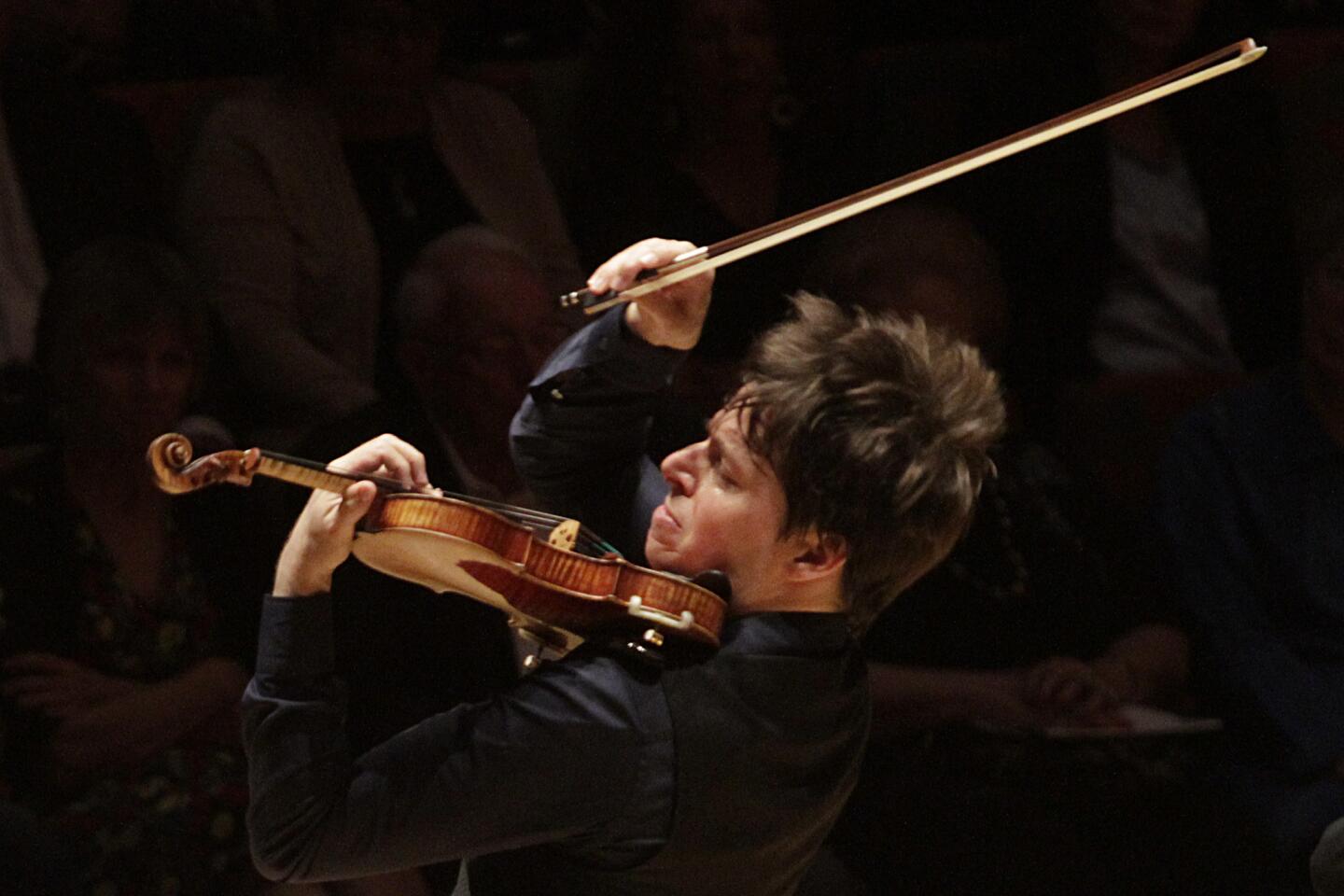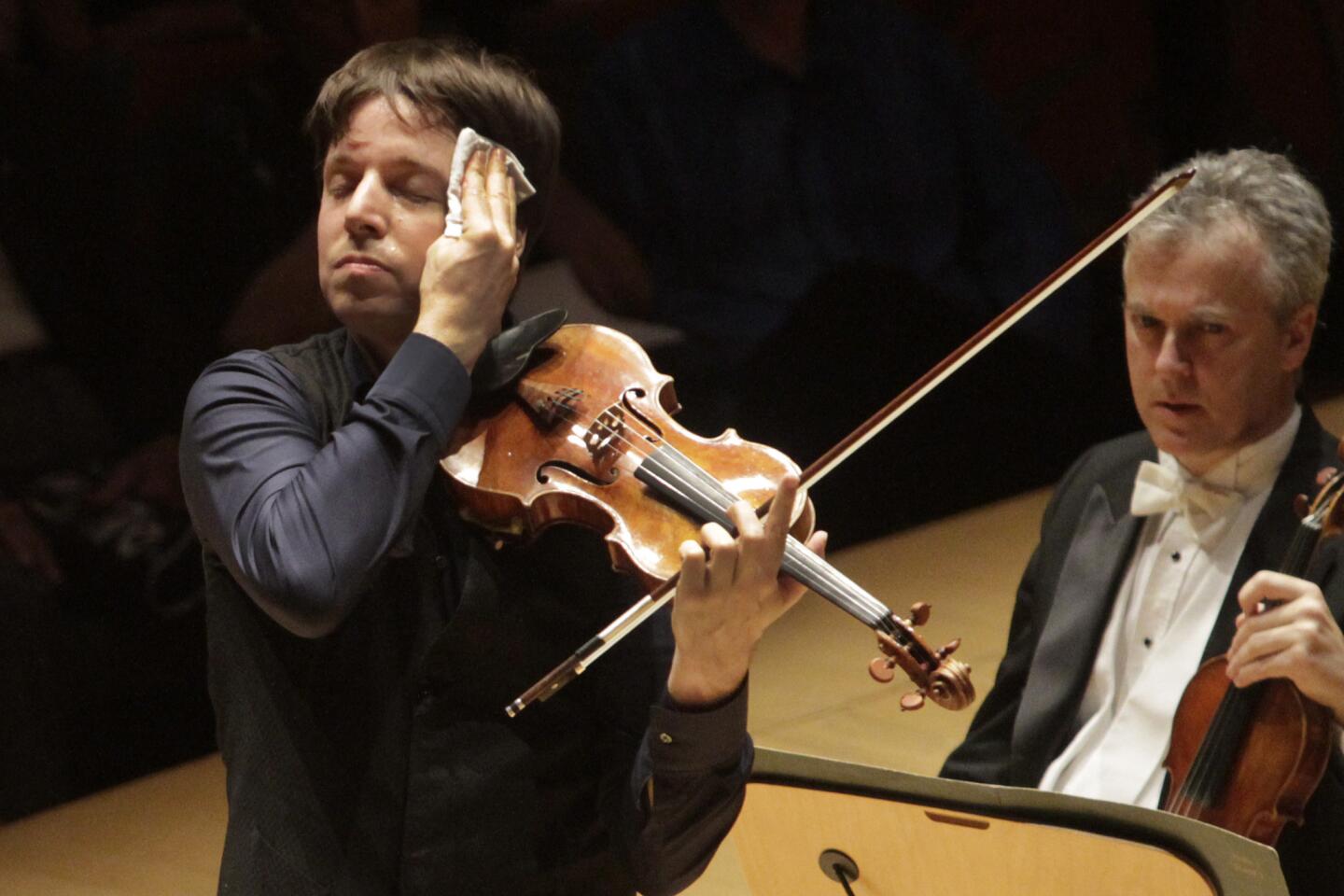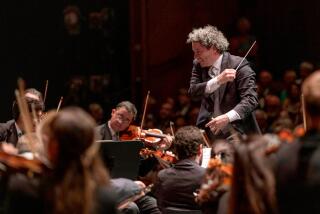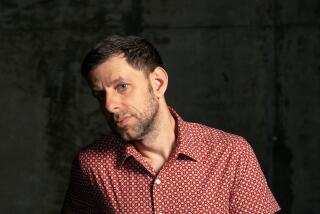Review: With Dudamel and Mozart, there’s life in the old ‘Linz’ yet
Mozart’s Symphony No. 36, known as the “Linz,” was tossed off in four days in 1783 when the 27-year-old composer arrived in the Austrian city and needed a new piece for his host, Count Thun-Hohenstein.
A remarkable score, the weightiest thus far of Mozart’s 41 symphonies and the first to have a brooding introduction signaling that weight, the score, nonetheless, gets the least attention of Mozart’s other late, lasting symphonies.
Thursday night the “Linz” got attention. Gustavo Dudamel made the half-hour symphony the most important piece of his Los Angeles Philharmonic program in Walt Disney Concert Hall. And he gave it a great performance.
The “Linz” was a Mozart warm-up for the orchestra’s four performances of the “Così fan Tutte,” which begins next week in a production with architect Zaha Hadid, couturier Hussein Chalayan and director Christopher Alden as collaborators.
The symphony will also serve as a “Così” wrap-up when the “Linz” is repeated on last concerts of the orchestra’s season. For Thursday’s program, which was repeated Friday morning, the pairing was with Sibelius’ Violin Concerto featuring Joshua Bell. When the symphony returns on May 30 and June 1, it will be joined by Ravel’s Piano Concerto in G, with Hèléne Grimaud as soloist.
But the news for the moment is Dudamel’s growing dexterity with Mozart. Given his flair for large-scale Romantic period and modern works, and bigger the better, Dudamel may not seem a natural fit for the Classical style, which is all about the balance and finesse. But then few young conductors who show real fervor are.
The “Linz” hasn’t been exactly ignored — it was a favorite of Bernstein, Karajan and Walter — but it shows up less frequently on concerts and recordings these days than other well-known Mozart symphonies. It also gets fewer terrific performances. One reason may be that the balance and finesse are particularly tricky, requiring maturity, while the music itself expresses the impulsive youth of a possibly manic-depressive young composer. On his way home to a nagging father while holed up with a frisky new wife in the palace of a count waiting for a symphony, Mozart bounced off walls.
Bernstein, no stranger to bouncing off such walls, happened to love the “Linz” and recorded it three times. The first is exciting but heavy-handed; the second, precious but lovely; the third, made at the end of his life, pure Mozartean magic. Karajan needed two go-arounds with the “Linz.” Likewise Walter.
When he first arrived as music director in 2009, Dudamel’s Mozart bounced off walls as well, by turn vivacious and lyrically affected. Throughout subsequent seasons he has experimented with big Mozart played in a grand symphonic fashion and with small-scaled Mozart done in the period style. He has been bold and refined, fastidious and easygoing, as he worked over the past two springs on productions of Mozart’s “Don Giovanni” and “The Marriage of Figaro,” which like this May were surrounded by Mozart concert pieces.
With his startlingly fresh “Linz,” Dudamel has now found an ideal balance historically, musically and emotionally. There was nothing particularly new or original about the performance. The orchestra was moderate sized. Dudamel went for an instrumental sound that honored the crispness of 18th century fashion but still allowed for a more modern sense of beauty. Principal timpanist Joseph Pereira played, however, on punchy period drums.
Moreover, Dudamel’s familiar traits were readily on display. He easily switched between joyful exuberance and ephemeral lyricism. But he no longer makes those poles seem like contrasts but rather believable sides of the same personality. This was Mozart taken whole.
There was more. Dudamel opened the program with Mozart’s overture to his comic Turkish opera, “The Abduction from the Seraglio.” The performance was happily all razzle-dazzle.
The Sibelius Violin Concerto made the audience happy. Bell first played it with the L.A. Phil and Esa-Pekka Salonen at the Hollywood Bowl 15 years ago and then recorded it with Salonen and the orchestra the following season. On disc, he gave a cool, sleek, even-tempered performance that floated over, rather than dominated, a captivating orchestral landscape.
Thursday, the violinist added more emphasis to every phrase. The violinist’s was a physical performance, exceptional technically, but none of the added emphasis added depth. Dudamel let Bell, who will be back in July to open the L.A. Phil Hollywood Bowl season, be.
Mozart is what mattered.
More to Read
The biggest entertainment stories
Get our big stories about Hollywood, film, television, music, arts, culture and more right in your inbox as soon as they publish.
You may occasionally receive promotional content from the Los Angeles Times.















